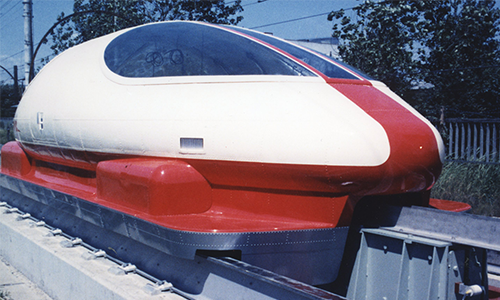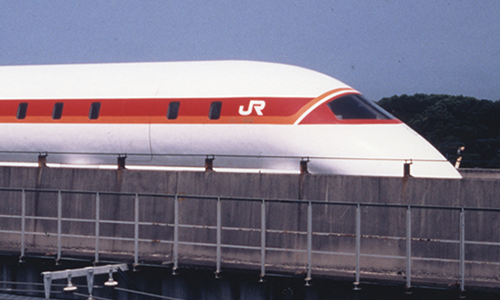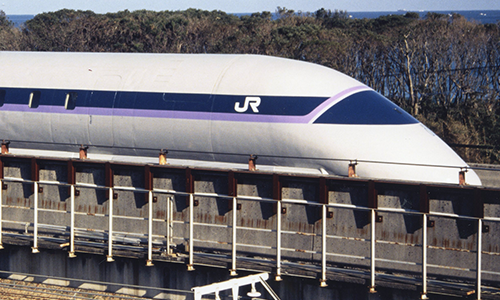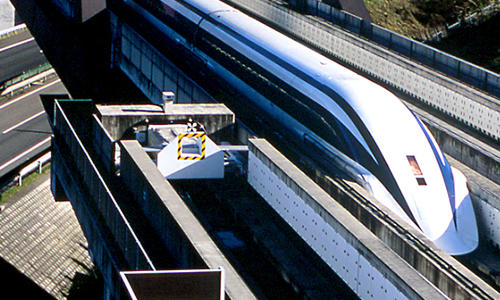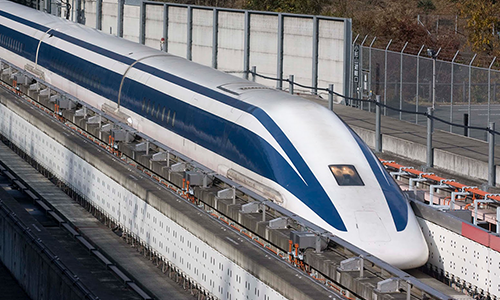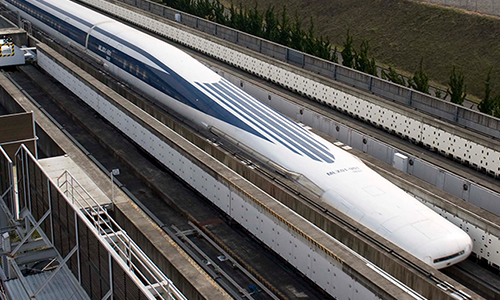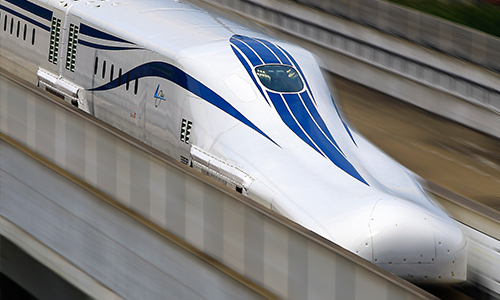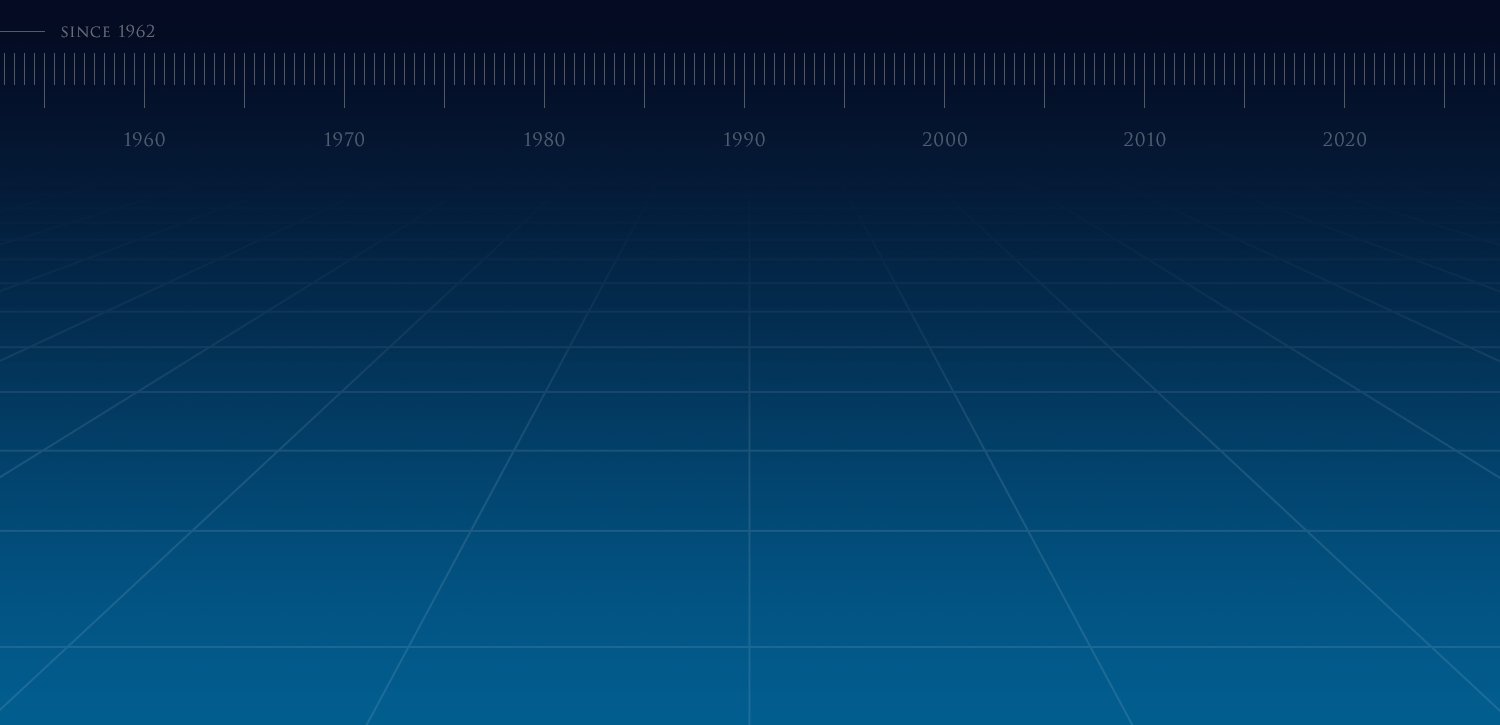
The Yamanashi Maglev Line was completed in March 1997
and began conducting tests in April of the same year. Its main features are as follows:




This section covers the history of the Yamanashi Maglev Line with photographs.
Superconducting Maglev's vehicle has evolved to attain a higher level of comprehensive
perfection in preparation for practical application.
Various running tests have been carried out under a specific scenario of Chuo Shinkansen’s commercial operation.


Series L0 vehicle was operated in a 12-car configuration, the longest trainset for the Series, to test a form closer to that used in commercial operation.


Running resistance and passenger comfort were examined while operating the vehicle through long tunnels. It achieved a daily travel distance of 2,525 miles in April 2015. This exceeds a daily travel distance (per trainset) anticipated when Chuo Shinkansen commences commercial operations.The cumulative travel distance since 1997 comes to 2.04 million miles (equivalent to circumnavigating the Earth 82 times).


A series of running tests have been carried out to ensure passenger comfort and stability at a high-speed Maglev operation exceeding 311mph in an effort to achieve optimum design for commercial services. This has led to a manned operation at 375mph in April 2015.
This is recognized by the ® GUINNESS WORLDS RECORDS as the Fastest maglev train.


“High-speed passing tests” began in 1998, letting two trains passing by on adjacent tracks at high speeds, and setting a relative speed record of 638mph in November 2004. These tests have confirmed that two Maglev trains can pass by in opposite directions without any issue.
All technologies required for commercial services have been developed.
From now on, JR Central will continue to brush up SCMAGLEV technologies to further reduce construction,
operation and maintenance costs through running tests.


The principle of "warning sign detection," i.e. to detect signs of fault in advance, helps reduce the cost of maintenance.
For example, bogie acceleration during train operation (vibrations on bogies) is analyzed to identify any warping of the guideway. Since abnormal vibrations could indicate guideway warping, corrective work is carried out before actual fault develops.
This type of information is sent to the General Control Center in real time, accumulated and analyzed to initiate proactive maintenance.
※Similar data is also collected from vehicle on the Tokaido Shinkansen.


To reduce maintenance workloads and costs, JR Central has adopted a technology for simplifying the structure of superconducting magnets and is verifying durability for application in commercial operation.
Conventional superconducting magnets are cooled by liquid helium or liquid nitrogen. But the need for such cooling can be eliminated by constructing superconducting magnets from different materials. This will also allow simplification of their structure, thus reducing maintenance workloads and costs.


JR Central is exploring ways to further reduce vibrations and noise to alleviate the ear discomfort that some people feel due to changes in atmospheric pressure. "Ear popping" occurs due to rapid changes in outside pressure when a train drives through a high-gradient section at high speed or travels between stations with significant altitude differences.
Superconducting Maglev's vehicle adjusts air intake and discharge to efficiently alleviate pressure changes and ear discomfort. JR Central will continue to conduct verification tests to enhance passenger comfort.
-
 1962# Research on a linear motor propulsion magnetically levitated railway system begins
1962# Research on a linear motor propulsion magnetically levitated railway system beginsJapanese National Railways (JNR) commenced research into developing Japan's own technology for a superconducting magnetic levitation railway system (Superconducting Maglev). The aim was to build a next-generation ultra-speed railway that connects Tokyo and Osaka in just one hour.
-
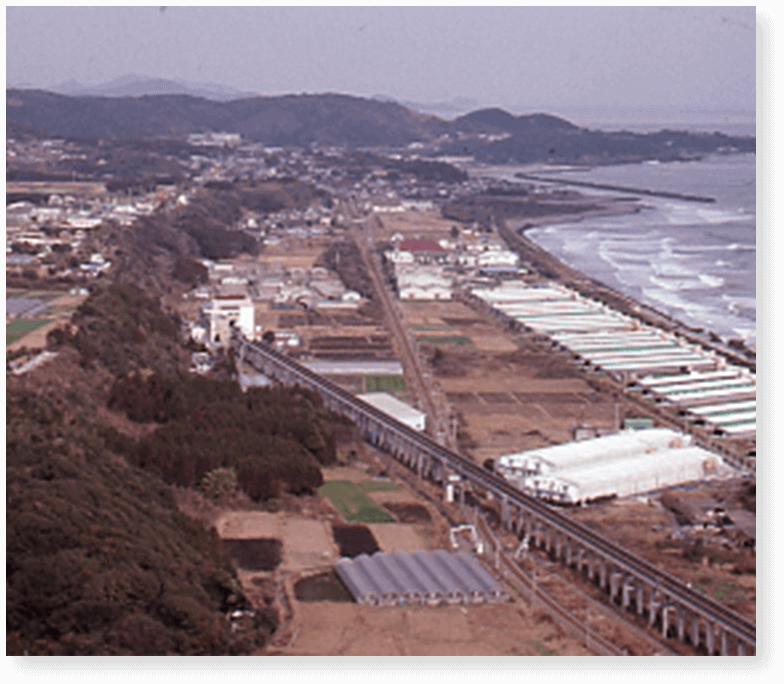 1977# Opening of the Miyazaki Maglev Test Track
1977# Opening of the Miyazaki Maglev Test TrackThe Miyazaki Maglev Test Track was opened in Miyazaki Prefecture. Two years later, the entire 4.3-mile stretch of the single test track was completed. Considerations made in selecting the site for the test track included "availability of a generally straight 4.3-mile stretch of land with no obstacles," "support from local communities," "close proximity to conventional railway lines for convenience and PR," "a stable power supply" and "freedom from adverse weather conditions, such as heavy snowfall, to secure a large number of days available for testing."
-
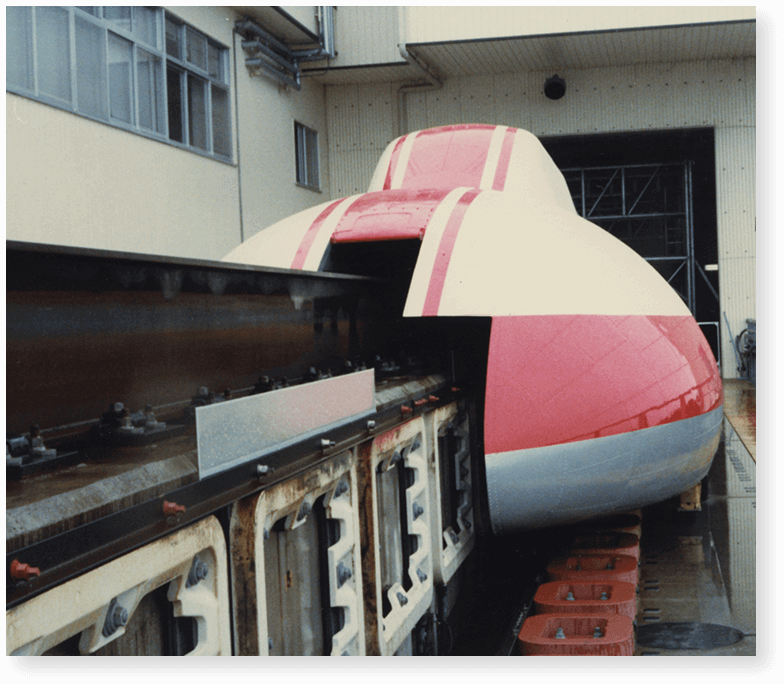 1977# First Maglev operation in Miyazaki
1977# First Maglev operation in MiyazakiIn July, Miyazaki's first-generation "ML-500" testing train began running tests on a reverse T-type guideway.
The ML-500 was built as an un-manned testing train with no passenger space. The "500" in its name refers to the goal of achieving an operational speed of 500km/h (311mph). -
 1980# From T to U
1980# From T to UIn April, the shape of the guideway was modified from the original reverse T to a U-type form, which offers greater benefits in terms of vehicle structure (e.g. accommodating passenger facilities).
In November, the "MLU001" testing train, capable of manned operation, began running tests. The "U" in its name refers to the new shape of the guideway. -
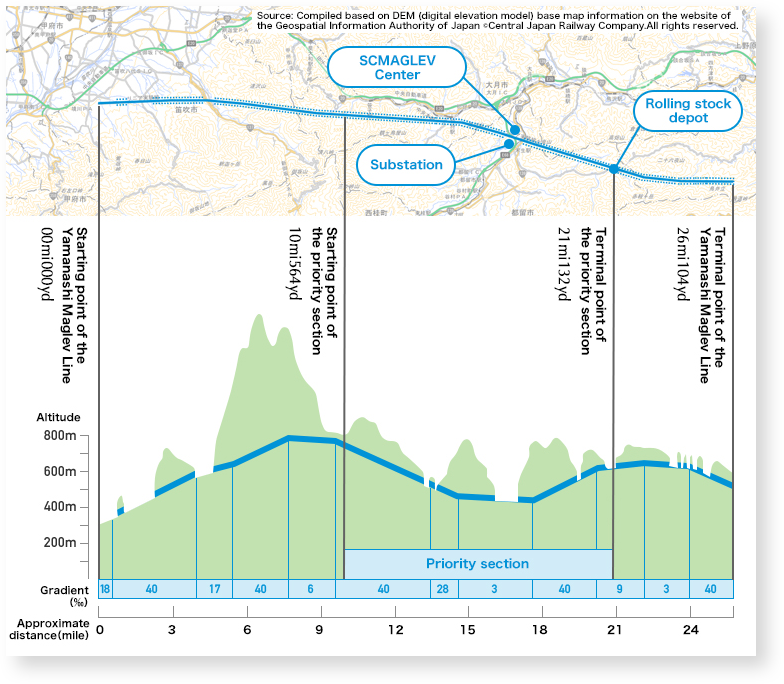 1989# A decision is made to construct the Yamanashi Maglev Line
1989# A decision is made to construct the Yamanashi Maglev LineThe Miyazaki Maglev Test Track was only a single track without tunnels, steep gradients or narrow curves. When a new test line with these missing features was required, it was decided to construct the Yamanashi Maglev Line.
-
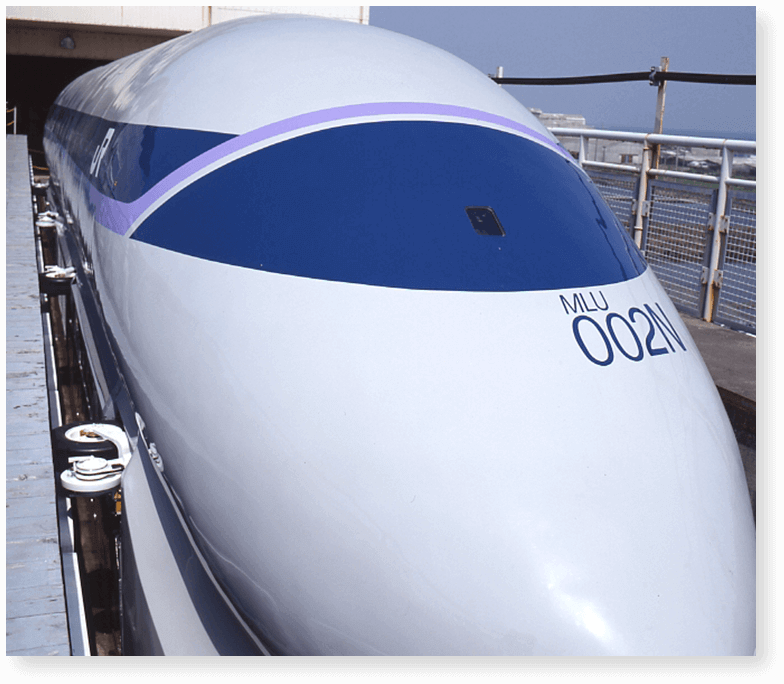 1993# Running tests end on the Miyazaki Maglev Test Track
1993# Running tests end on the Miyazaki Maglev Test TrackThe "MLU002N," the final testing train for the Miyazaki Maglev Test Track, was completed. This vehicle's train body is almost identical to the MLU002, but the MLU002N had disc brakes for the wheels and bogies that provide elastic suspension for superconducting magnets in order to improve passenger comfort.
-
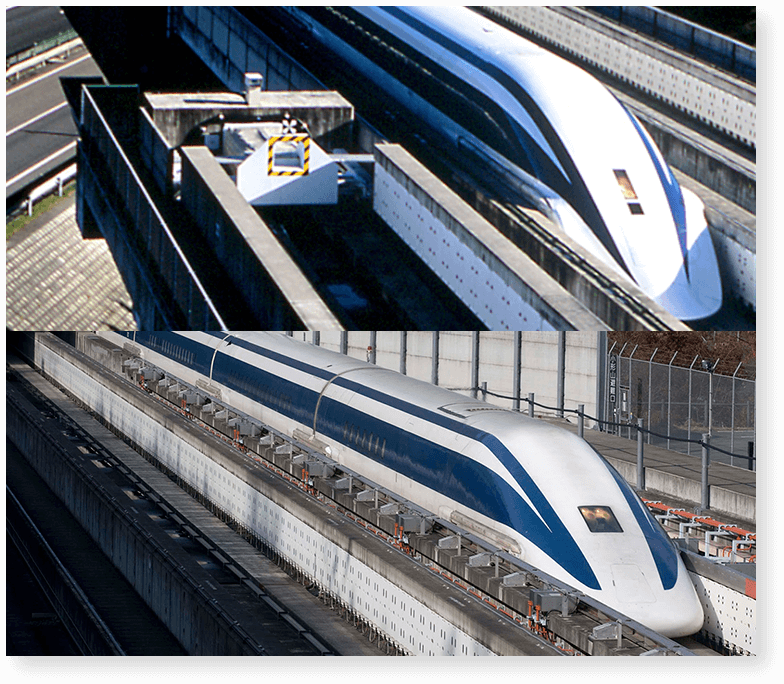 1995# Completion of the Yamanashi Maglev Line
1995# Completion of the Yamanashi Maglev LineIn July, the MLX01 testing trains were delivered and taken to the Yamanashi Maglev Line. They were available in two types of leading cars in different shapes; "double-cusp head" and "aero-wedge head." The "X" in the name refers to "Experimental" and "Express."
-
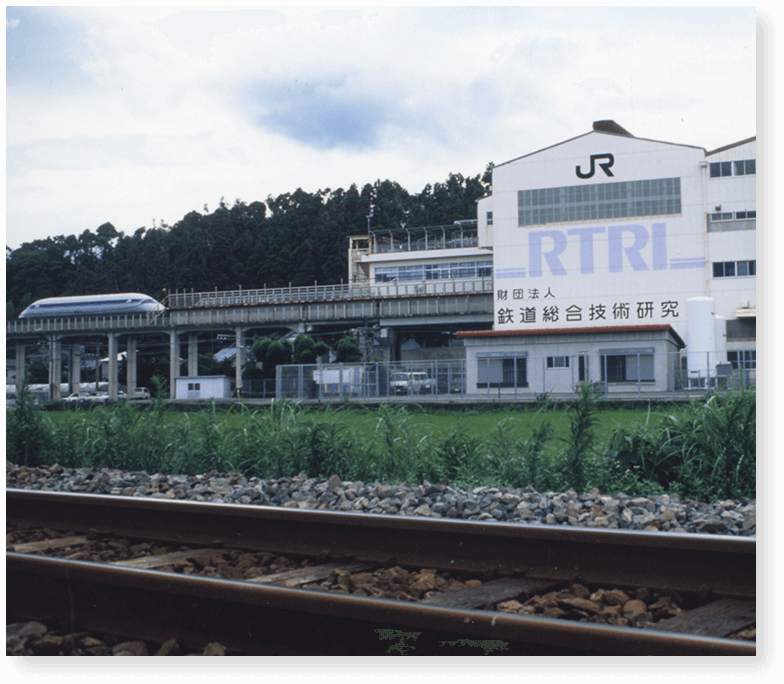 1996# The beginning of a leap forward
1996# The beginning of a leap forward20 years of Miyazaki Maglev Test Track running tests ended, marking the completion of basic Superconducting Maglev technology development.
-
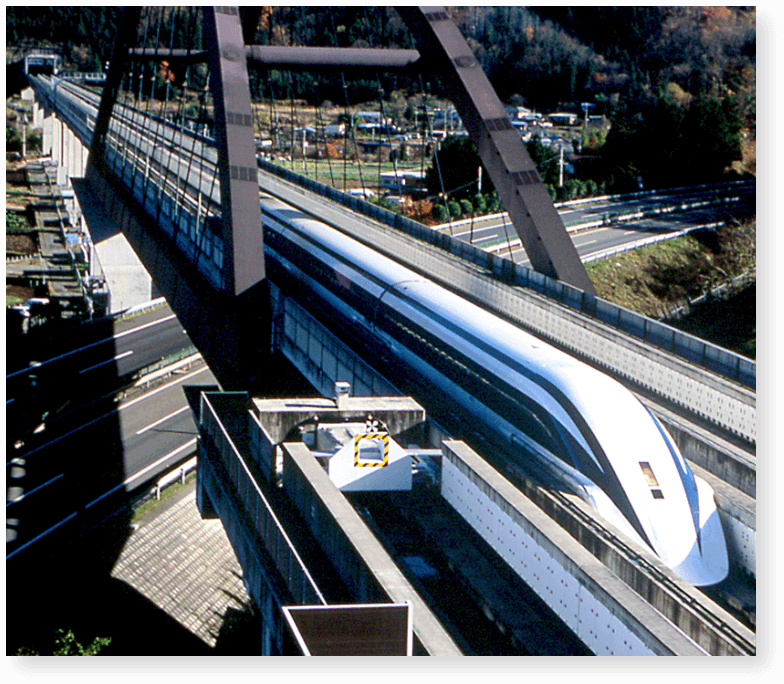 1997# Preliminary running tests for practical technological application
1997# Preliminary running tests for practical technological applicationIn February, the preliminary round of running tests for practical technological application began to examine and adjust the operation of the Superconducting Maglev system, which combined the MLX01 and ground facilities.
-
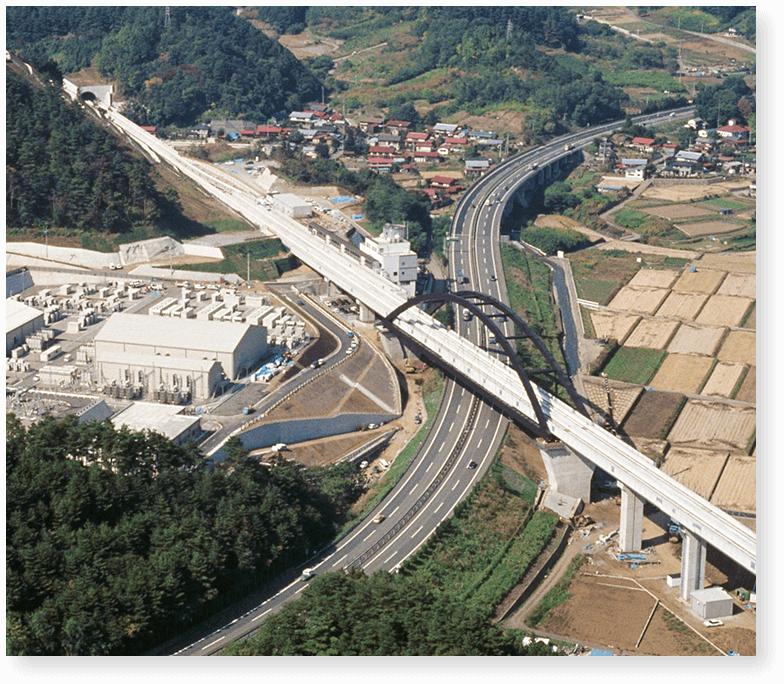 1997# Preparations for full-fledged running tests are completed
1997# Preparations for full-fledged running tests are completedOn March 27, a 11.4-mile priority section of the Yamanashi Maglev Line was completed following a review by Japan's Minister of Transport.
-
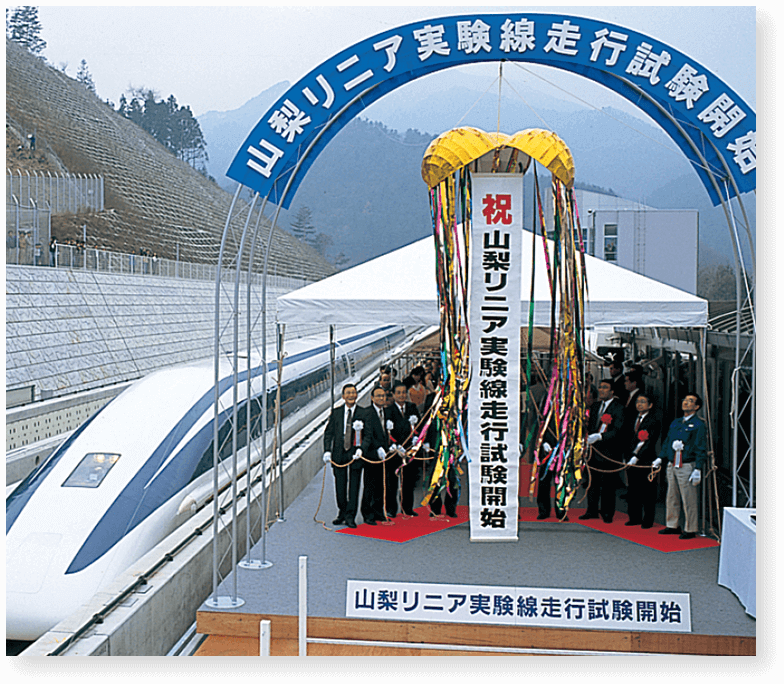 1997# Birth of the Yamanashi Maglev Line
1997# Birth of the Yamanashi Maglev LineOn April 3, full-scale running tests were commenced on the Yamanashi Maglev Line in a ceremony for the start of running tests.
After a ribbon-cutting ceremony, running tests began at low speed to examine the vehicle's operational stability and braking performance. -
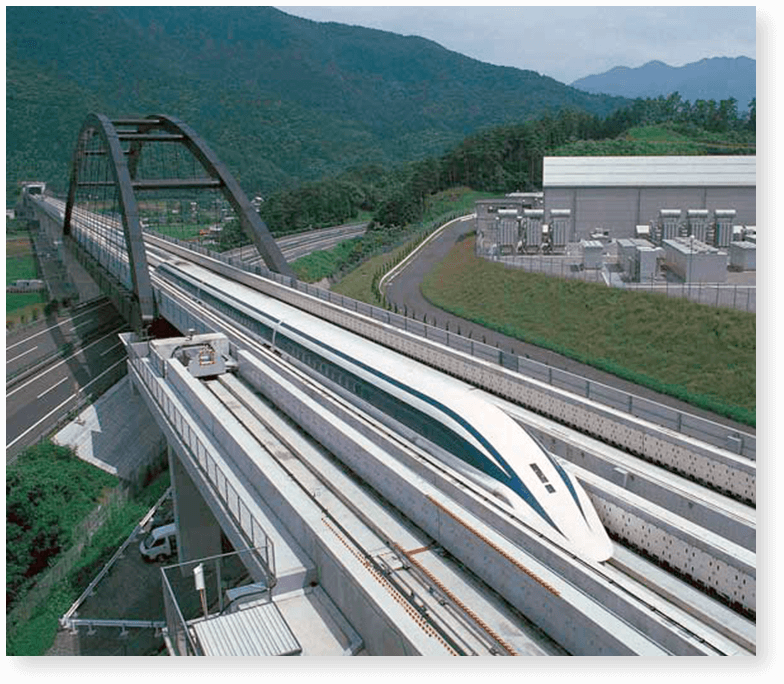 1997# A speed of 311mph is attained
1997# A speed of 311mph is attainedOn May 30, the first levitated operation was successfully carried out on the Yamanashi Maglev Line.
JR Central subsequently confirmed that the Superconducting Maglev system was capable of stable levitated operation. Attempts to increase operational speed began in June, achieving a speed of 311mph during levitated operation on November 28. -
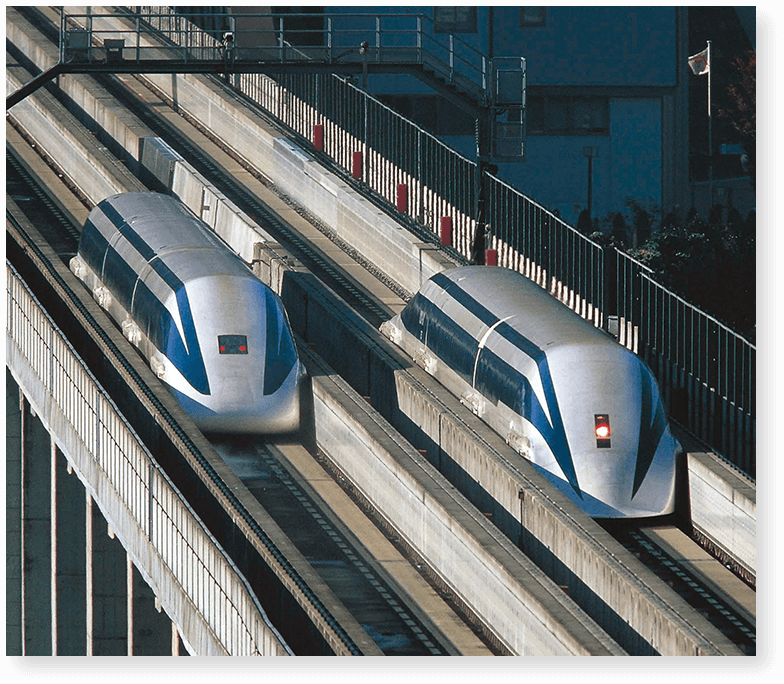 1998# High-speed passing tests
1998# High-speed passing testsPassing tests involving two trains began as part of the comprehensive function testing program. This was designed to confirm operational safety when two Superconducting Maglev trains passed by in opposite directions.
-
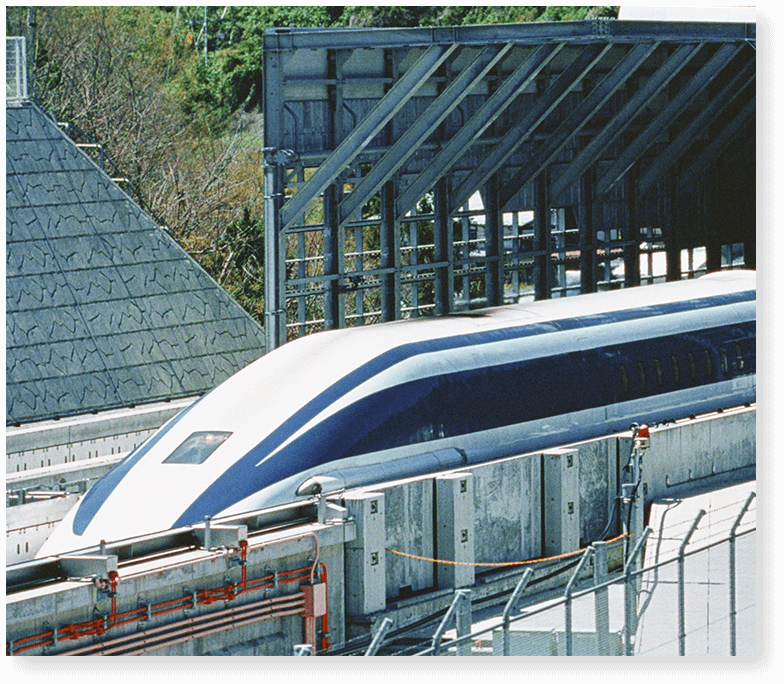 1999# Test operation with extended trainsets
1999# Test operation with extended trainsetsAnticipating the use of extended trainsets for revenue services, running tests were carried out with 5-car trainsets, the longest at that time on the Yamanashi Maglev Line. The tests examined the operational stability of extended trainsets.
-
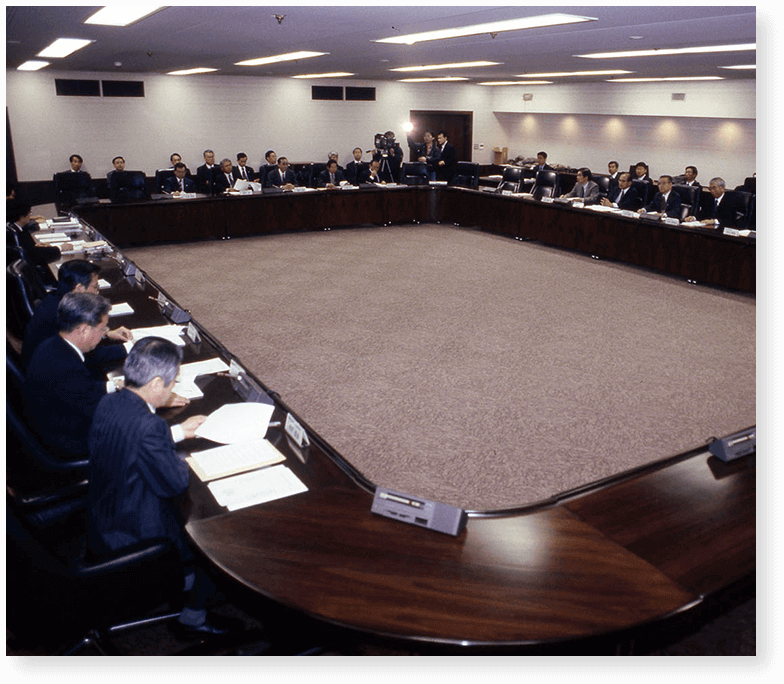 2000# A viable ultra-speed mass transport system
2000# A viable ultra-speed mass transport systemOn March 9, the Transport Ministry's (today's Ministry of Land, Infrastructure, Transport and Tourism) Maglev Technological Practicality Evaluation Committee (MTPEC) acknowledged that "the technology of the Superconducting Maglev has reached a stage that makes it a viable ultra-speed mass transport system."
With the aim of establishing all necessary basic technologies for practical application, technological development and running tests were promoted with a focus on verifying the reliability and long-term durability of the system, as well as reducing the costs and improving the aerodynamics of the vehicles. -
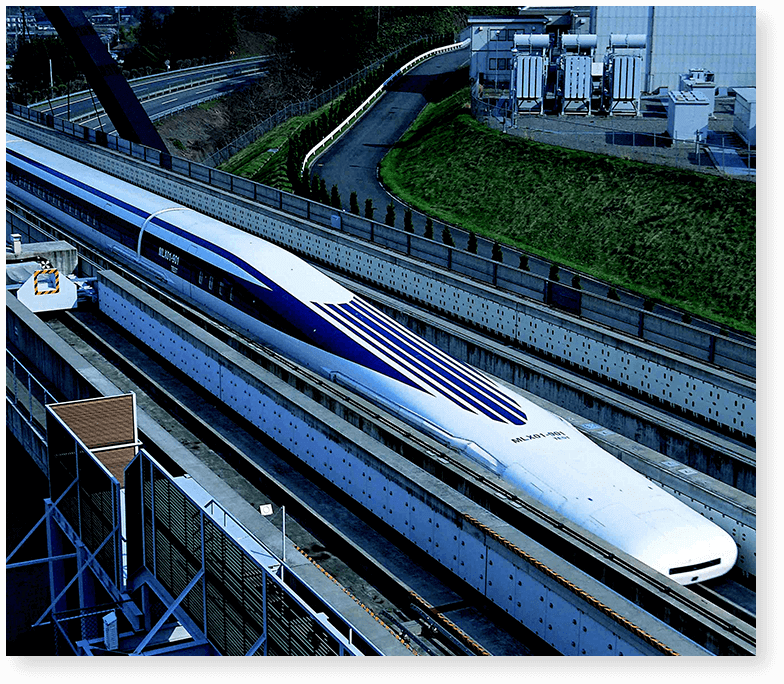 2002# New experimental vehicles are delivered
2002# New experimental vehicles are deliveredIn June, a new "MLX01-901" leading car and middle car were delivered for testing. Running tests involving these cars began in July. In the MLX01-901, many factors including vehicle aerodynamics and passenger comfort were tested from various angles to produce substantial data for improving conventional vehicle for use in commercial services.
-
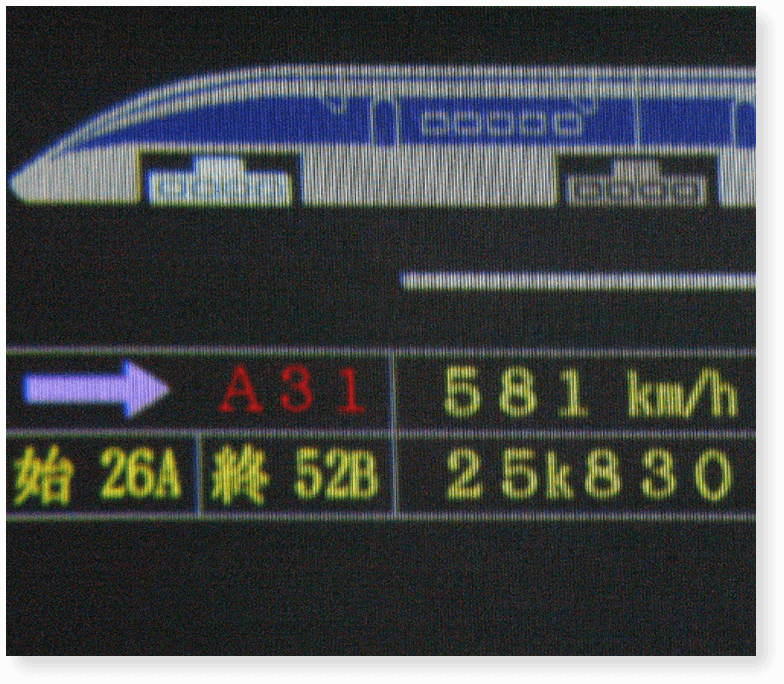 2003# A new manned world speed record of 361mph is achieved
2003# A new manned world speed record of 361mph is achievedThe Guinness Book of World Records recognized the Superconducting Maglev's maximum speed of 361mph attained on December 2 during manned operation, which beat the Maglev's previous record of 343mph. (Guinness World recognition earned on February 16, 2004)
-
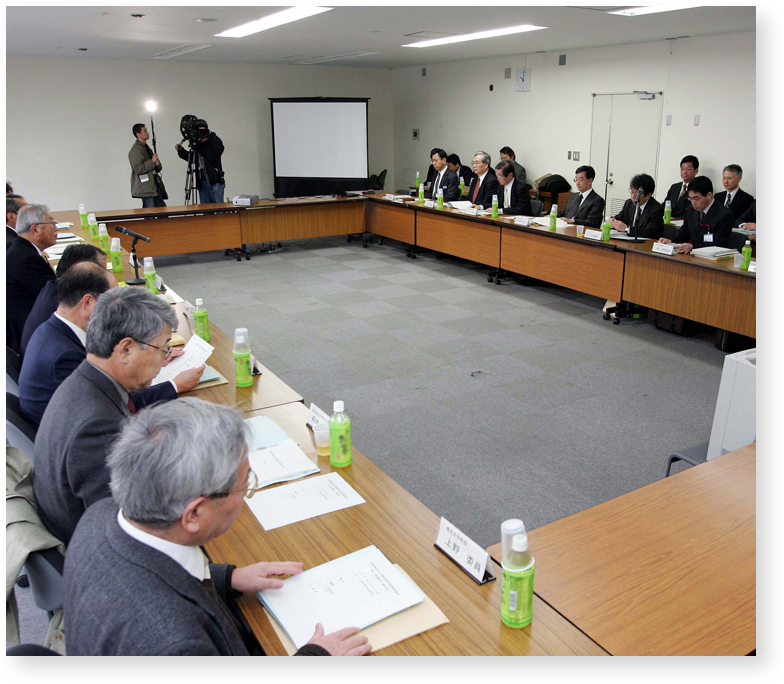 2005# "All necessary technologies" are established
2005# "All necessary technologies" are establishedOn March 11, the MTPEC acknowledged that "all necessary technologies of the Superconducting Maglev for the future revenue service are established."
This signified official recognition that JR Central's efforts to develop the Superconducting Maglev system cleared all technological conditions for practical application. -
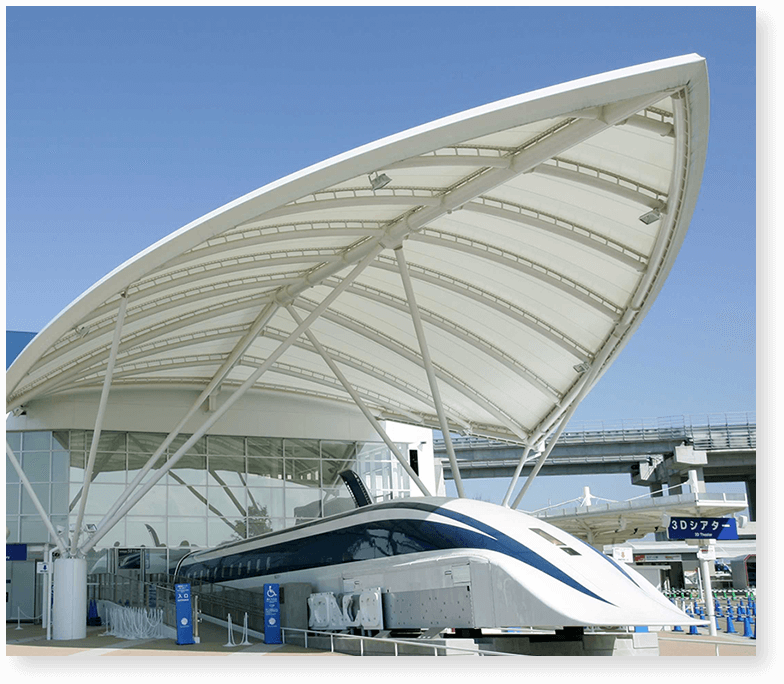 2005# The "MLX01" is unveiled to the world
2005# The "MLX01" is unveiled to the worldOn March 25, JR Central opened the Superconducting Maglev Pavilion at the 2005 World Exposition in Aichi, Japan. It showcased the actual "MLX01" leading car with double-cusp head that had set the world record railway speed of 361mph. It also featured a massive 3D theater and Superconducting Maglev laboratory. Approximately 6.9 million people visited in 185 days (up to September 25).
-
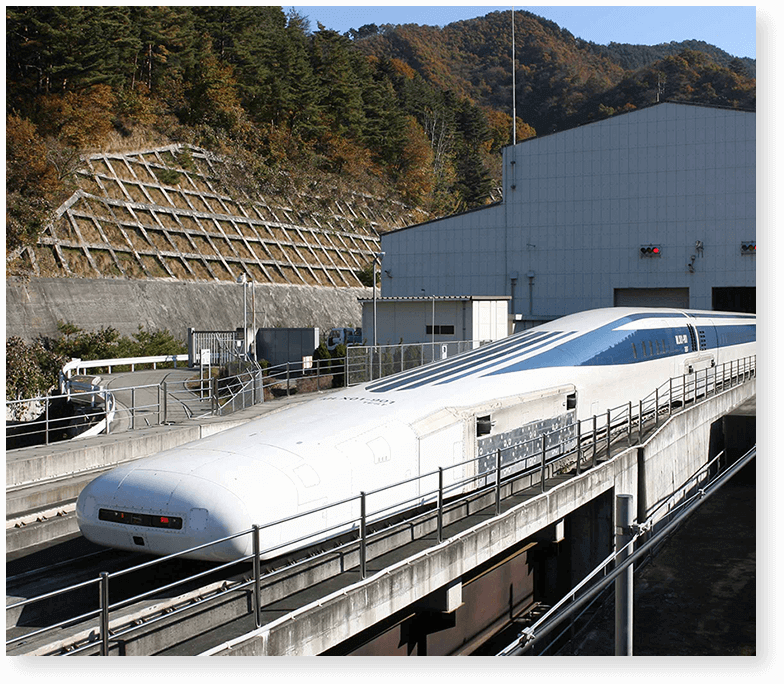 2005# Minus 423°F as high temperature
2005# Minus 423°F as high temperatureIn November, running tests began with vehicle featuring high-temperature superconducting magnets capable of maintaining superconductivity at temperatures 60°F higher than the previous magnets that required -452°F. The vehicle traveled 2,554 miles during the test period, recording a maximum speed of 344mph and demonstrating a very high degree of perfection.
-
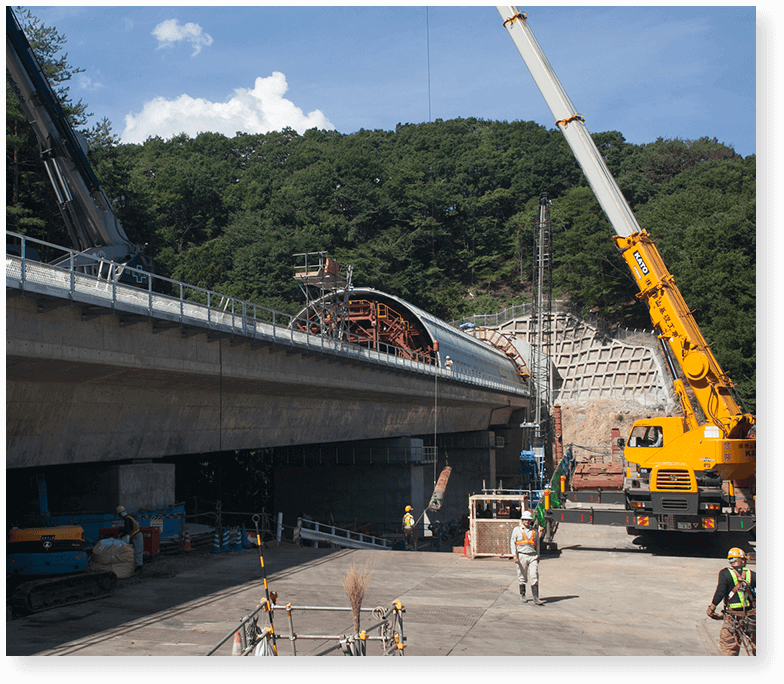 2008# Renovation and extension begin
2008# Renovation and extension beginRenovation and extension of the Yamanashi Maglev Line began.
-
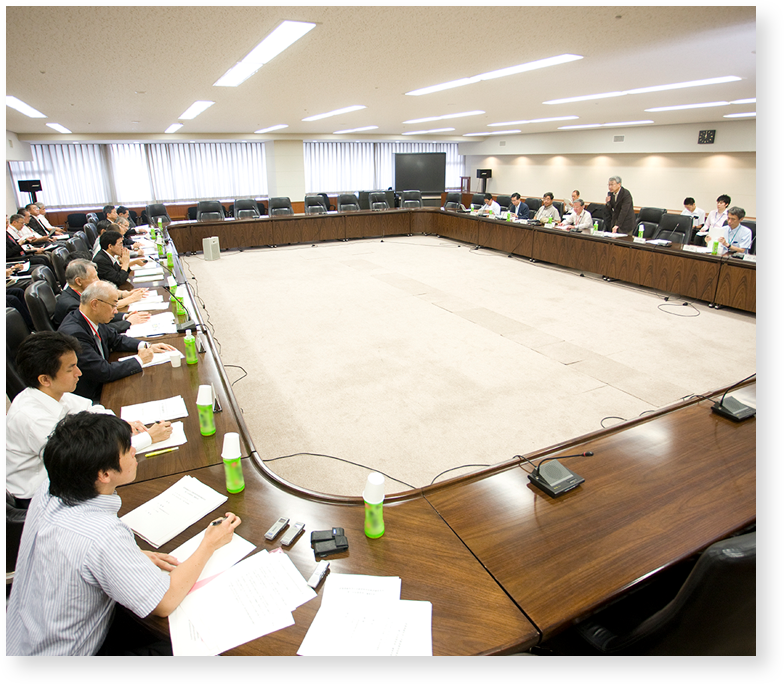 2009# Technologies required for the revenue service are fully developed
2009# Technologies required for the revenue service are fully developedThe MTPEC acknowledged that "the technologies of the Superconducting Maglev have been established comprehensively and systematically, which makes it possible to draw up detailed specifications and technological standards for revenue service."
-
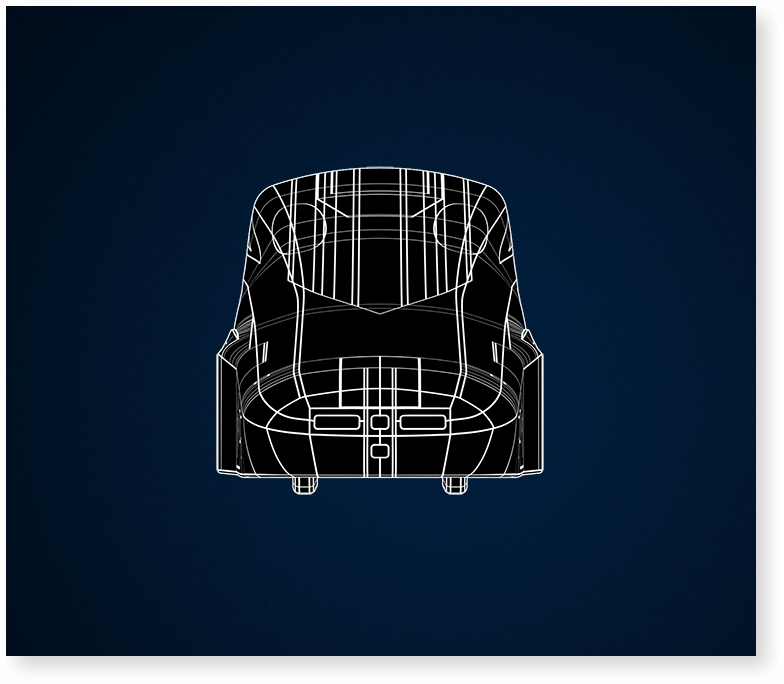 2010# The major specifications of new vehicle are determined
2010# The major specifications of new vehicle are determinedIn October, the major specifications of the new "Series L0", the first-generation vehicle in commercial service, were finalized.
-Maximum service speed: 311mph
-Vehicle capacity: Up to 24 people for the leading car and up to 68 people for each middle car
-Trainset length: 980.9ft (12-car trainset) -
 2011# Running tests on the priority section end
2011# Running tests on the priority section endThe cumulative travel distance exceeded 545,000 miles in September, marking the end of running tests using the MLX01 in the priority section.
-
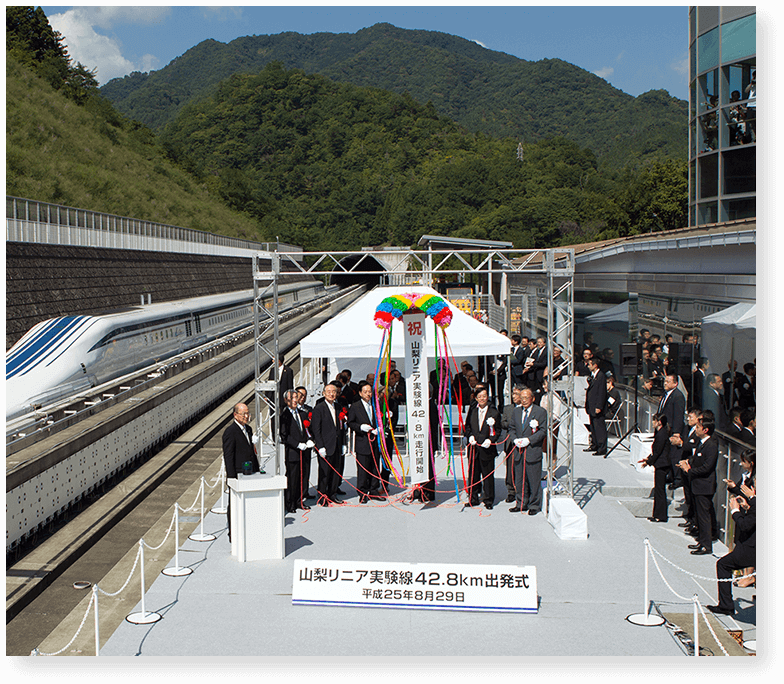 2013# The fully renewed and extended 26.6-mile line is launched
2013# The fully renewed and extended 26.6-mile line is launchedIn August, the entire 26.6-mile stretch of the Yamanashi Maglev Line was launched at a ceremony. Operation using the L0 began on the renewed and extended Yamanashi Maglev Line.
-
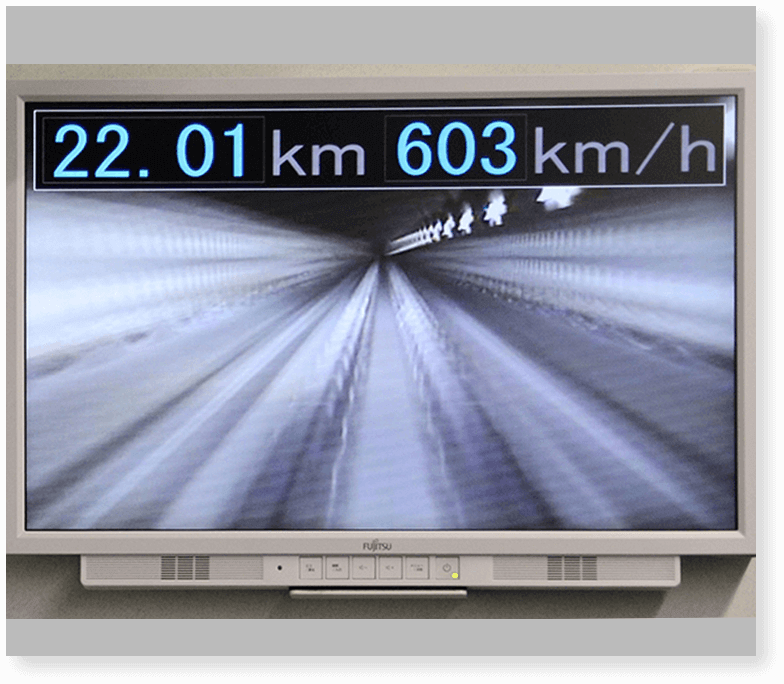 2015# A new railway speed world record is set
2015# A new railway speed world record is setSeries L0 operated at a maximum speed of 375mph during manned operation. This was a new world record in railway speed. It also set a new record in per-day travel distance at 2,525 miles.
-
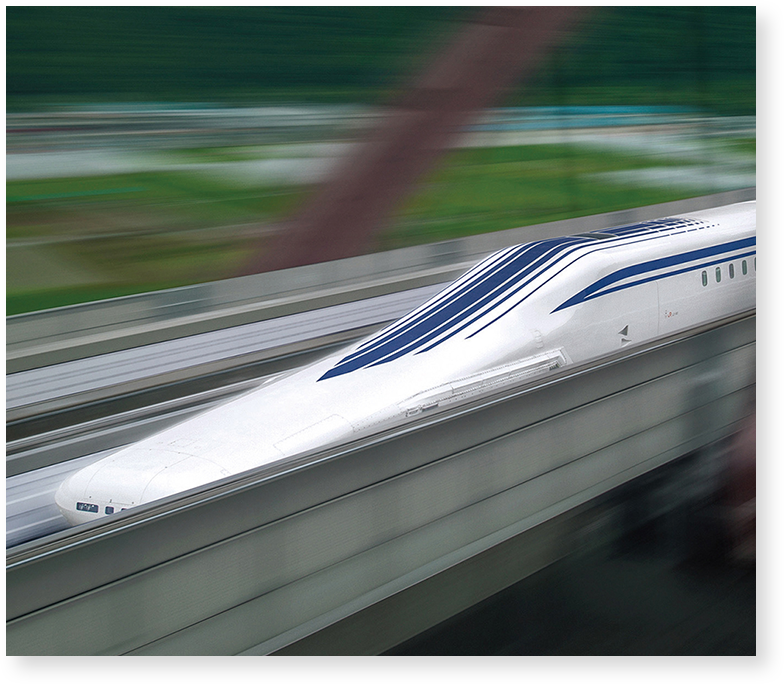 2017# Technological development for the revenue service is completed
2017# Technological development for the revenue service is completedThe MTPEC acknowledged that "the Superconducting Maglev technological developments necessary for the revenue service line have been completed."
JR Central will continue to refine the Superconducting Maglev technology further and work on reducing the costs of construction, maintenance and service operation. -
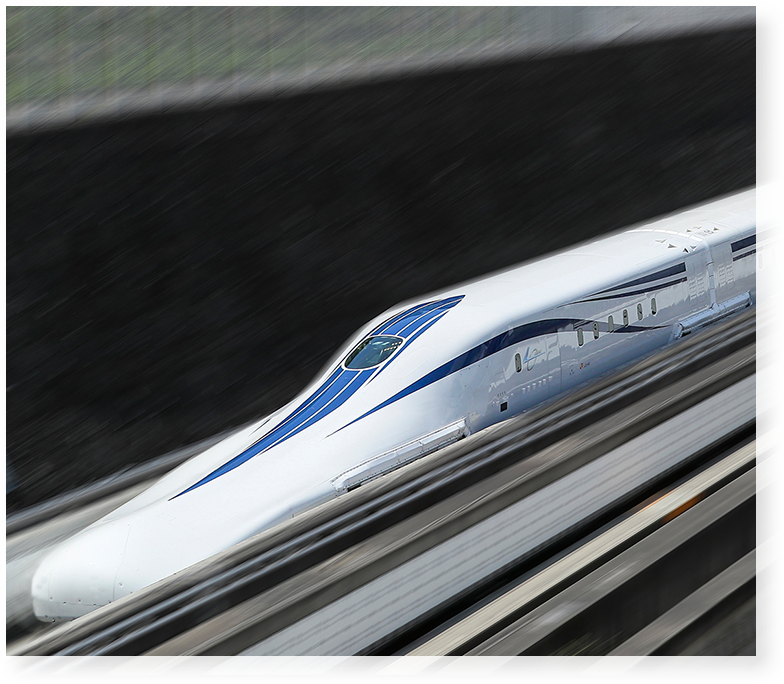 2020# Series L0 Improved version commences running tests
2020# Series L0 Improved version commences running testsRunning tests commenced with Series L0 Improved version, a brushed-up version of the original Series L0 incorporating data gathered from various tests.




































